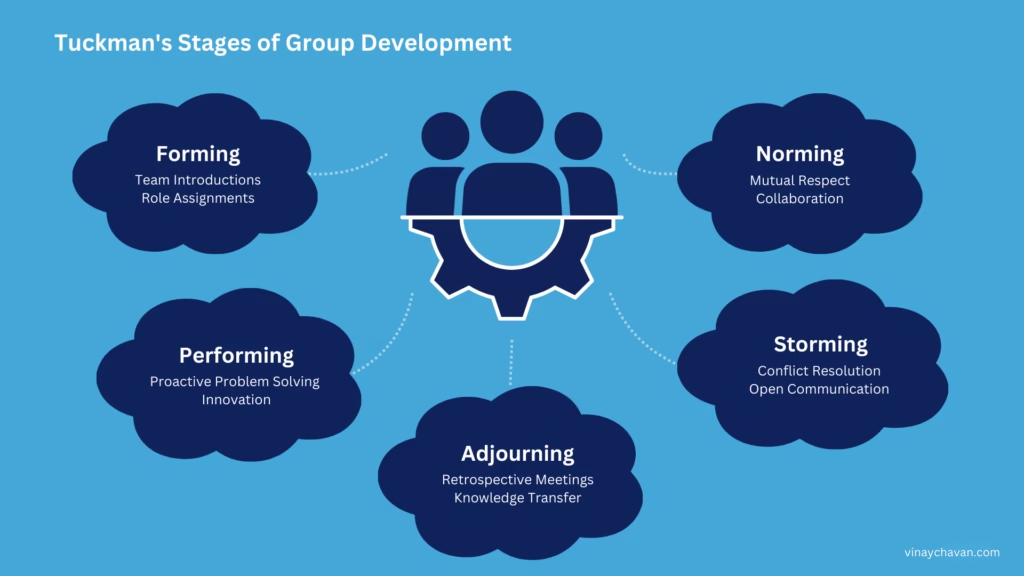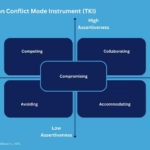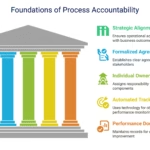If there is one lesson I have learned in my years of leading engineering teams and product innovation, it is this: nothing gets done without teamwork. As a manager, I’ve seen great ideas falter and projects stall when individuals work in silos, each with their own vision and approach. But when you transform a group of people into a true team, magic happens. Ideas flow seamlessly, challenges are tackled collectively, and goals are not just met—they are exceeded. But how does a group become a team? That’s where Tuckman’s stages of team development come into play.
From a Collection of Individuals to a Unified Force
Imagine you’ve just put together a new team—whether for a product launch, a critical engineering project, or a startup venture. You’ve got talented individuals, each bringing their own strengths and experiences. However, without a shared direction and understanding of how to work together, they remain just that—individuals. The challenge as a leader is to shape them into a cohesive unit working towards a singular goal.
Dr. Bruce Tuckman, a psychologist, identified five key stages that every team goes through in its evolution. Recognizing these stages can help managers and leaders guide their teams effectively and accelerate their growth. Let’s dive in.

Stage 1: Forming – The Excitement of the Unknown
At the forming stage, team members are polite, cautious, and eager to understand their roles. There’s excitement, but also uncertainty. I remember when I took over as CEO of Yapsody India, leading a diverse team across engineering, customer success, marketing, and design. In those early days, everyone was feeling out the new dynamics. My role as a leader was to provide clarity, set expectations, and ensure that everyone felt heard.
What Happens in the Forming Stage?
- Team introductions and icebreaker activities to build rapport.
- Setting initial goals, project objectives, and team expectations.
- Assigning roles and responsibilities while allowing flexibility for adjustments.
- Establishing communication channels and tools (Open Handbook, Process documents, Google Chat/Email, etc.).
Stage 2: Storming – Where Conflicts Shape Growth
This is the stage where tensions arise. People challenge ideas, struggle for influence, and experience frustration. It’s tempting to avoid conflict, but I’ve learned that healthy debates, when managed correctly, lead to better outcomes.
At Yapsody, we built a culture where challenging the status quo was encouraged, but it had to be done with integrity and respect. The key here is to ensure that conflicts are constructive, not personal. Leaders must act as facilitators, helping the team navigate differences while reinforcing the shared goal.
What Happens in the Storming Stage?
- Differences in working styles and opinions surface, leading to conflict.
- Some members may push against leadership or team norms.
- Leaders step in to mediate disputes and set conflict resolution guidelines.
- Encouraging open communication and trust-building exercises.
- Establishing problem-solving frameworks to resolve issues objectively.
Stage 3: Norming – Finding the Rhythm
Once conflicts are addressed, the team starts to find its rhythm. Processes become smoother, collaboration improves, and individuals begin to trust one another. This is the stage where you see alignment—where team members understand not just their own roles, but also how they fit into the bigger picture.
As a leader, this is the time to reinforce positive behaviors and ensure that progress is being made. Acknowledging wins, big or small, fosters a sense of momentum and unity. I always made it a point to celebrate small victories, as they build confidence and reinforce the idea that we are moving forward together.
What Happens in the Norming Stage?
- Team members develop mutual respect and recognize each other’s strengths.
- Collaboration improves, and workflows become more efficient.
- Leaders take a step back, allowing the team to self-organize more effectively.
- Regular check-ins and retrospectives ensure alignment and continued growth.
- Social bonding activities help solidify trust and camaraderie.
Stage 4: Performing – The Peak of Efficiency
This is where the real magic happens. A high-performing team is self-sufficient, goal-oriented, and innovative. They don’t just execute; they anticipate challenges, adapt, and push boundaries.
In my years of leading agile teams, I’ve seen the shift when a team moves into this stage. Stand-up meetings become more about problem-solving rather than status updates. Engineers proactively improve code without being asked. Designers collaborate seamlessly with developers. It’s a stage where leadership shifts from directing to empowering.
What Happens in the Performing Stage?
- The team operates with minimal supervision and high efficiency.
- Problem-solving is proactive rather than reactive.
- Team members hold themselves and each other accountable.
- High levels of innovation and productivity emerge.
- Focus shifts from managing conflicts to achieving peak performance.
Stage 5: Adjourning – The Transition to What’s Next
Every project has an end, and every team eventually disbands or evolves. This stage, sometimes called the “mourning” phase, is often overlooked, but it’s vital. Reflection, feedback, and knowledge transfer ensure that learnings are carried forward.
I’ve always encouraged my teams to document lessons learned and celebrate the journey before moving on to the next challenge. It provides closure and sets the stage for future success.
What Happens in the Adjourning Stage?
- Conducting retrospective meetings to reflect on successes and challenges.
- Recognizing individual contributions and celebrating achievements.
- Knowledge transfer sessions to document insights for future teams.
- Emotional closure as team members move on to new projects or roles.
- Maintaining professional relationships and connections beyond the project.
Why Teamwork is Everything
Building a successful team is not about assembling the smartest individuals; it’s about creating an environment where those individuals can thrive together. The best ideas are rarely the result of one genius mind but rather the culmination of diverse perspectives refining each other.
In my journey, from leading mobile development at Yapsody to overseeing complex engineering infrastructures, I’ve seen firsthand that teamwork is the single most important factor in getting things done. No matter how innovative your technology, how groundbreaking your product, or how ambitious your vision—without a strong, cohesive team, execution falls apart.
So, if you’re a leader, engineer, or entrepreneur, invest in your team. Guide them through the natural ups and downs of team development. Encourage open communication, foster trust, and most importantly, keep them focused on a singular, compelling goal. Because when a group truly becomes a team, there are no limits to what they can achieve.

